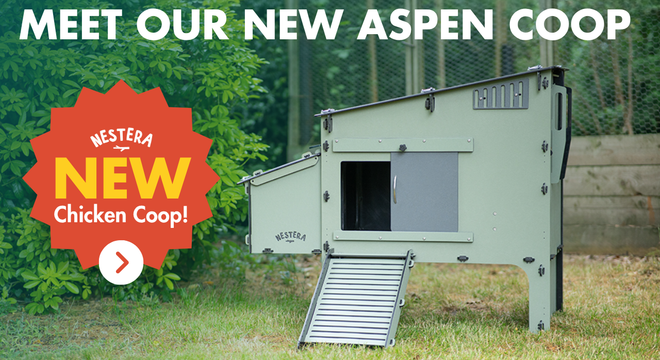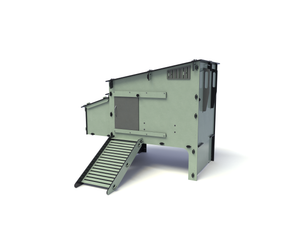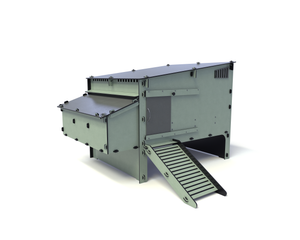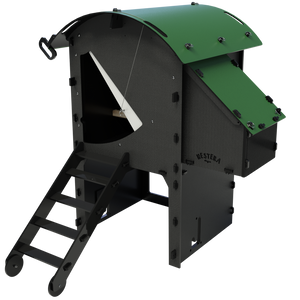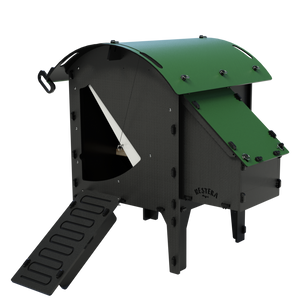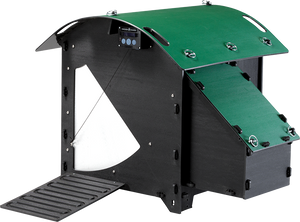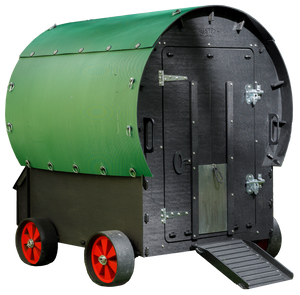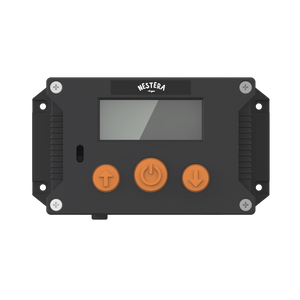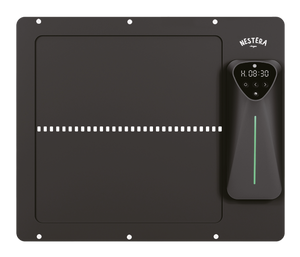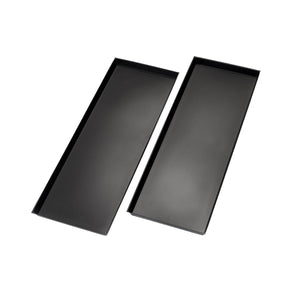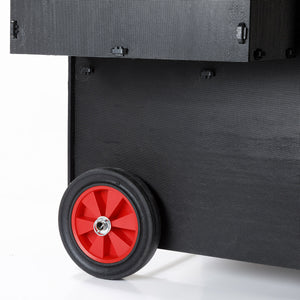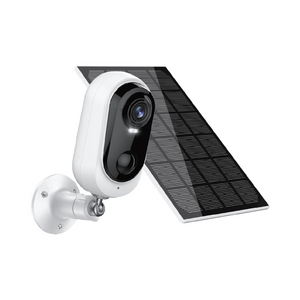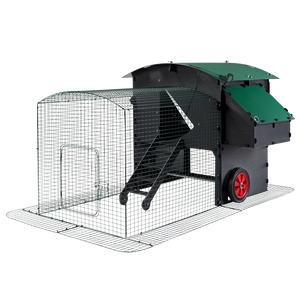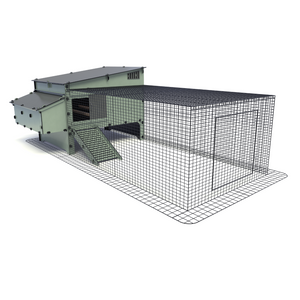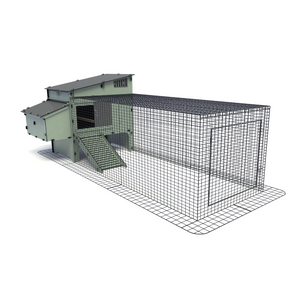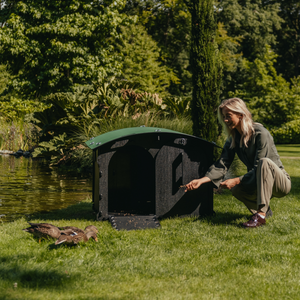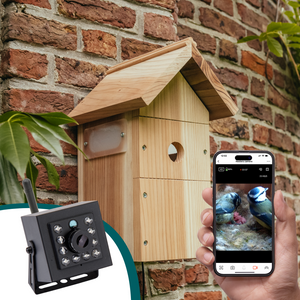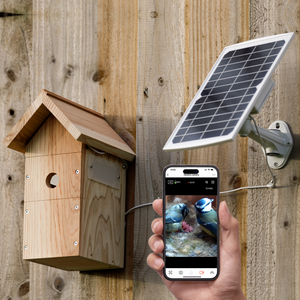A coop provides a safe, clean area for chickens to sleep and lay eggs. For this reason, it is more accurate to think of a coop as a bed than it is to think of it as a bedroom. Although keepers sometimes use the term ‘hen house’, it is not a house in the same way we would view one. Chickens prefer to be outside during daylight hours to eat, drink, stretch, scratch, preen, snooze and explore.
All Nestera coops feature strong rounded perches as most chickens prefer to roost on a raised branch-like structure when they sleep. All our coops also feature a separate nest box, as hens prefer to use a compact dark and secure space in which to lay or brood their eggs.
Where Are The Windows?
We often get questions about the lack of windows in our coops. When any animal is kept in a cool dark place, they are generally in their most relaxed state. To sleep or lay, chickens need to be relaxed, which is why we keep the area dark.
At sunrise, chickens in our coops will still be in the dark so they will remain quiet and relaxed. If there was a large window in the coop, they would wake and want to be outside to feed, to drink, to stretch and scratch the ground. If they could not fulfil these normal daytime behaviours, they would become stressed, frustrated and peck one another. For this reason, it is better to keep chickens in a dark space or use an automatic door opener to allow them outside to behave naturally at sunrise.
Shelter
Our Lodge and Raised coops allow chickens to use the area underneath to shelter safely from adverse weather, as well as to feed and drink. During the day, the coop door is left open and the coop interior becomes much brighter. The chickens can choose to sit in the coop to relax or lay in a cosy nest box, or be more active outside.
Summer vs Winter
All coops get warm in the Summer, whatever material they’re made from, but during the day, hens are only inside the coop for the time it takes them to lay an egg. For this reason, ALL coops should be located in a naturally shaded area. At night, the temperature cools and with the adjustable vents fully open, warm air will escape while cooler air is drawn in.
In the Winter, coops are cool both day and night but chickens produce a surprising amount of body heat. If birds are kept dry and draught free, they stay happy and healthy even on the coldest nights. In cooler temperatures, coop vents should be partially open to allow moist air to escape and prevent respiratory illness.
Bigger is Not Always Better!
When coops are too large, birds waste energy heating the extra space. This means they aren’t as rested and they need to consume more food to maintain their condition. Bantams can struggle with this far more than large breeds as they have less body mass. Overly large coops cost more to produce and maintain, and can have adverse effects on poultry health. If you want to give your birds an enhanced area in which to live, it is always better to increase and enrich their outdoor space as this is where they spend most of their time.
Flockdown
During bird flu outbreaks, housing orders come from the government and are compulsory. This does not mean that your flock should be locked in their coops, but it does mean that you should stop free-ranging them and keep them separate from wild birds.
Our Ethos
Here at Nestera, we are totally committed to the holistic welfare of the poultry we help to house. We supply our coops all over the world and do our best to meet expectations for keepers in those countries.
People’s views vary considerably regarding the optimum space they wish to give their birds. For this reason, we strictly adhere to the welfare guidelines set out by the governments in which they live. We have produced the table below which clearly shows the indoor space and perch length requirements in Germany. We have taken this information from this government document:

The Run we provide is designed to be a secure area for temporary use only. Examples of this are while chicks are growing, or in the mornings before birds could be let out to free-range or into a larger area. There are as many different ways to build an enclosure as there are chicken keepers! How keepers choose to build this depends on many different factors, including flock size, bird type, space available, predators, and their own lifestyle to name a few.
